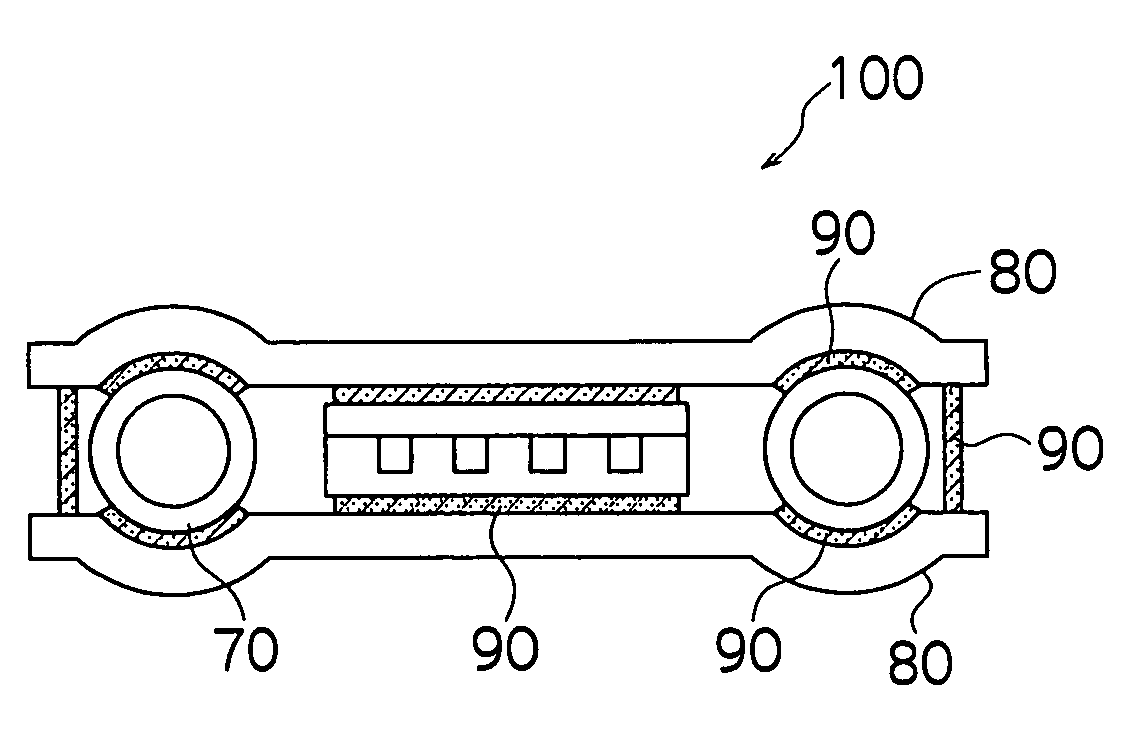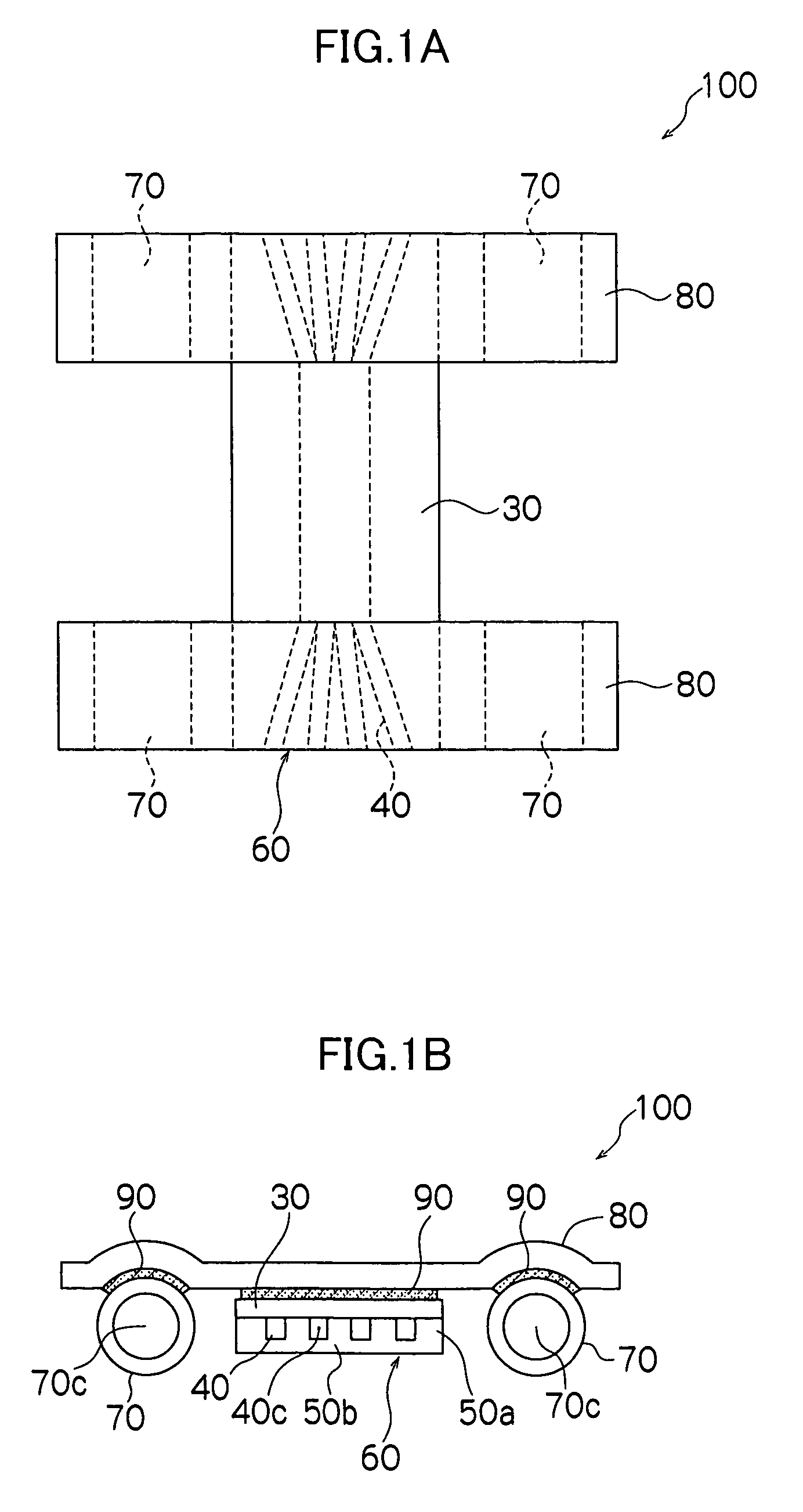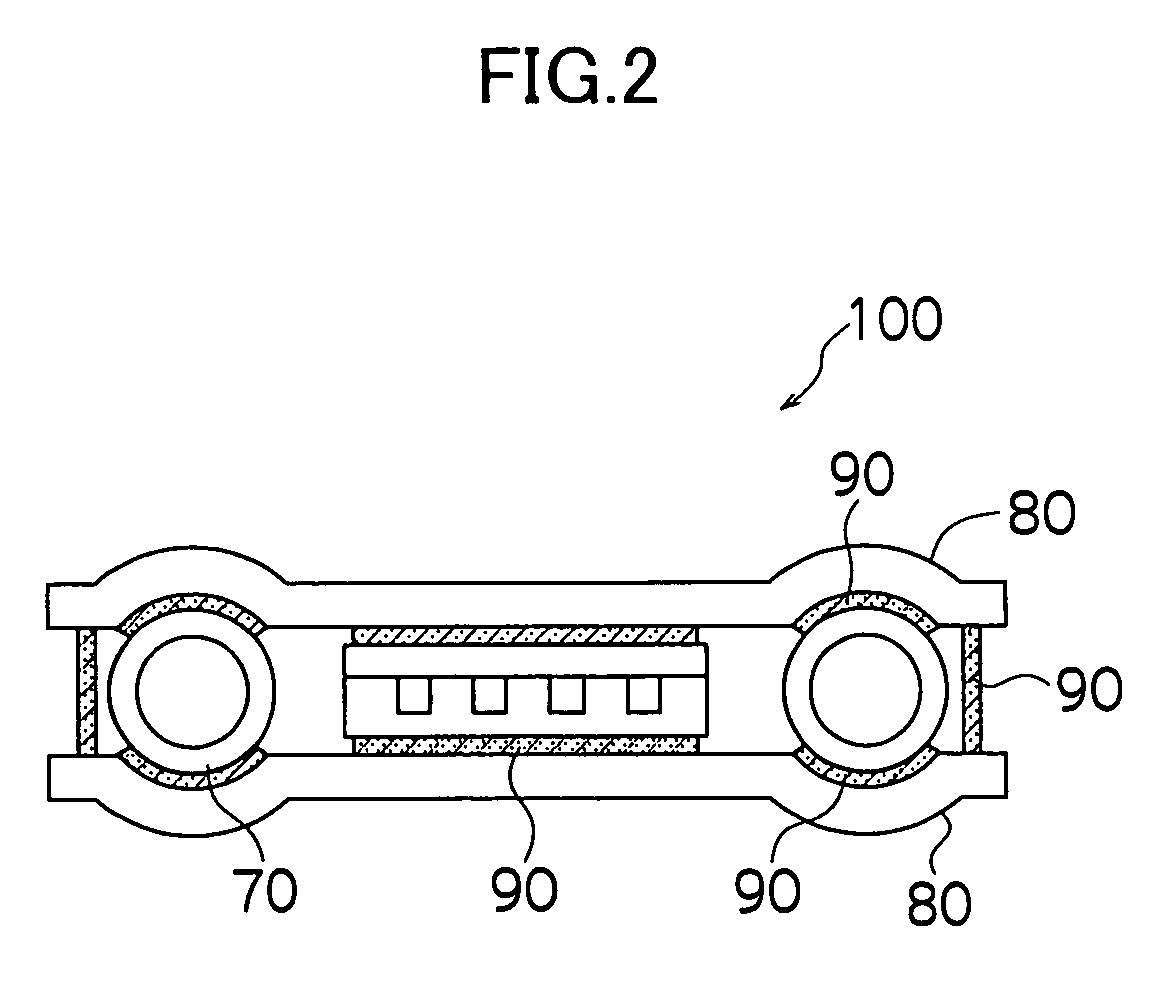Connector-integrated type polymer optical waveguide, method and mold for producing the same
a technology of integrated type and optical waveguide, which is applied in the direction of optical waveguide light guide, instruments, optics, etc., can solve the problems of inability to obtain a sufficiently large difference in refractive index between the core layer and the clad layer, and the precision of the obtained core diameter is expensive, etc., to achieve easy and inexpensive production, excellent structure stability, and less number of processes
- Summary
- Abstract
- Description
- Claims
- Application Information
AI Technical Summary
Benefits of technology
Problems solved by technology
Method used
Image
Examples
example 1
[0176]In this example, a connector-integrated type polymer optical waveguide having 4×4 branched optical waveguide core, as shown in FIGS. 1A and 1B, is produced.
[0177]At first, a resist as a thick film (SU-8 manufactured by Micro Chemical Co., Ltd.) is applied to a Si substrate by a spin coating method. Thereafter, the resist is prebaked at 80° C. and exposure through a photomask and development are effected, whereby: a projected portion corresponding to the 4×4 branched optical waveguide core [the cross-sectional area at the branched portion thereof is a square of 50 μm×50 μm, the cross sectional area of the projected portion at the mixing portion is a rectangle of 200 μm×10 mm, the pitches (i.e., the pitches of the projected portions at the positions corresponding to the core position observed at the cross-section obtained by cutting with a dicing saw, which will be described later) are 250 μm, and the length of the projected portion is the sum of the length of the dicing saw-cut...
example 2
[0193]A connector-integrated type polymer optical waveguide is produced in a manner similar to that of Example 1, except that the rigid member for connector formation made of a stainless steel is set not at both upper and lower sides but only at one side (refer to FIG. 5D). The average insertion loss at the initial stage is 3 dB in such a structure, and the cost is significantly reduced, as compared with Example 1. However, as the average insertion loss is increased to 4 dB under the conditions of 70° C. temperature and 95% humidity, it is assumed that this structure is suitable for a connector used at the room temperature.
example 3
[0194]Connector-integrated type polymer optical waveguides are produced in a manner similar to that of Example 1, except that the material of the rigid member of connector formation (a stainless plate in Example 1) is replaced with one of: a mixture of an epoxy resin and 70% by weight of a metal powder; a mixture of an epoxy resin and 70% by weight of glass; glass; and a ceramic sintered body, and that the two-component-mixing type epoxy resin is used as the adhesive for fixation.
[0195]Connector-integrated type polymer optical waveguides which achieve substantially the same performances as that of Example 1 are obtained. Further, in order to reduce cost, other connector-integrated type polymer optical waveguides are produced in a manner similar to that of Example 3, except that an aluminum die cast is used. In this case, the performances at the room temperature are substantially the same as those of Example 1. However, the insertion loss at a high temperature is increase to 3.4 dB.
PUM
 Login to View More
Login to View More Abstract
Description
Claims
Application Information
 Login to View More
Login to View More - R&D
- Intellectual Property
- Life Sciences
- Materials
- Tech Scout
- Unparalleled Data Quality
- Higher Quality Content
- 60% Fewer Hallucinations
Browse by: Latest US Patents, China's latest patents, Technical Efficacy Thesaurus, Application Domain, Technology Topic, Popular Technical Reports.
© 2025 PatSnap. All rights reserved.Legal|Privacy policy|Modern Slavery Act Transparency Statement|Sitemap|About US| Contact US: help@patsnap.com



